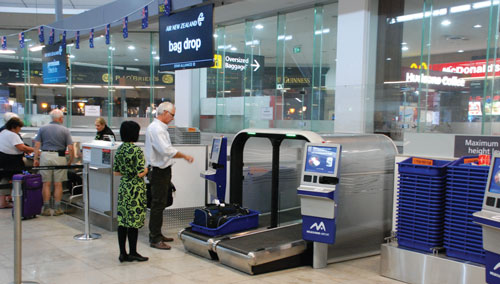PEEK INTO THE FUTURE: In this section, Raini Hamdi asks industry leaders to pen their thoughts on what the future will bring. Here is Francesco Violante, CEO, SITA on the future passenger journey

As technology becomes a normal part of people’s travel experience, it is continuing to uproot the traditional passenger journey.
One major area is the rise of the connected aircraft. By 2016, more than three-quarters of airlines will deploy tablets, onto which information such as passenger name lists, passenger bag load status and connecting flight information is loaded, thereby improving the passenger experience.
Passengers are beginning to expect to use their mobile devices onboard for calls, Internet, emails and entertainment, with those signing up for inflight connectivity through SITA’s subsidiary OnAir increasing year on year.
Most airlines and airports are also investing in business intelligence, which will furnish passengers with information they say they want – flight times and bag status, for instance, or waiting times at check-in, security and checkpoints.
A third trend is m-commerce, enabling passengers to purchase travel services on the move. According to our surveys, once passengers have bought their tickets, nearly 40 per cent would purchase ancillary services while en route – such as paying for parking or buying a lounge pass. Most airports plan to offer m-commerce in the next two years, while airlines see it as a new frontier in retailing.
SITA is also involved in some exciting collaborative innovations and developments at airports that promise significant change. At check-in, SITA’s trial with Virgin Atlantic of wearable technology, including Google Glass and Sony Smart watches, demonstrates great potential to enhance passengers’ travel experiences.
The trial enabled concierge staff to meet and greet VIP passengers with a personalised check-in service. But we are only at the beginning of a learning curve that could see wearable technology impacting other areas across the airport and aircraft maintenance.
Also at the airport, we are starting to pilot beacon technology that could open up a range of low-cost possibilities for interacting with passengers, such as determining passenger location, navigating the airport and much more. Developments in passenger flow monitoring are another great example of IT benefiting the passenger experience and increasing airport efficiency.
The next major technology-led trend at airports is self bag-drop. We are seeing the rise of bag-drop areas at airports, although our surveys find that passengers are still cautious. Our work includes self bag-drop at Melbourne and Brisbane airports in Australia.
With IATA’s and Airports Council International (ACI)’s SmartSecurity, the industry is working on the next generation of checkpoint. IT is the enabler, helping to optimise processes. New biometrics kiosks are a prime example of change to come, as they fast track international arrivals, enabling a ‘land, touch and go’ procedure.
Our work involves the introduction of Automated Passport Control self-service kiosks at Orlando Airport as well as new self-service passport control kiosks at Miami International Airport.
If we are going to create this new journey then continued investment in IT is essential, along with infrastructure based on global standards and interoperability between technologies, sharing data securely and using common processes and approaches. That means backing IATA’s and ACI’s programmes to deliver a better passenger experience.
We see common-use technologies as vital to the new journey. Passengers do not want to learn how to use different technologies every time they use a different airline or go to a different airport.
Finally, we need to decide who owns the passenger, and work together to share the benefits of business intelligence and analytics because these have great potential to improve our industry’s processes and the passenger experience.
By Francesco Violante, CEO, SITA
This article was first published in TTG Asia, August 8, 2014 issue, on page 10. To read more, please view our digital edition or click here to subscribe.




















